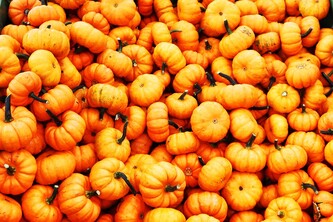 Something I am committed to is helping parents navigate the world of dealing with picky eaters. We know that fish is important, from playing a role in brain health to eye health and providing a healthful source of protein to our children. Many of my families have mentioned chicken nuggets being a fan favorite, on the other hand. Below I will outline a gradual approach to help transition picky eaters from chicken nuggets to fish, ensuring that the process is both successful and enjoyable for your child. Step 1: Try a Different Brand of Chicken Nuggets When transitioning a picky eater to new foods, try to start of with picking something familiar. If your child loves chicken nuggets, begin by experimenting with different brands and varieties. Choose chicken nuggets with high quality ingredients, that are baked instead of fried, and contain a lower saturated fat content. By introducing small changes to the familiar, we are laying a foundation for more future diet changes.  Step 2: Transition to Long Breaded Chicken Strips After your child has become comfortable with different brands of chicken nuggets, consider switching to long breaded chicken strips. With the longer strip, it provides variation in texture and shape, yet still making a less intimidating change from the nuggets your child loves. Step 3: Introduce Breaded Fish Once your child has started to enjoy long breaded chicken strips, it is time to introduce some fish! Try something like fish sticks, because it is similar in shape and texture to the chicken strips. Explain the benefits of fish to your child, and make this an exciting thing to try. Wording that might help: "Fish helps you to see better to catch lightning bugs at night" Wording that might not help: "Omega 3 fatty acids in fish is important for the health of your retina, and may help to reduce dry eyes." Step 4: Transition to Unbreaded Fish with Something Your Child Enjoys As you make progress with fish sticks, introduce unbreaded fish with something you know your child enjoys. For example, maybe your child likes tacos. Try fish tacos! Or maybe your child has a favorite dipping sauce or a favorite piece of fruit or vegetable to pair with it. If your child likes oven baked sweet potato fries, you could always serve the unbreaded fish with oven baked sweet potato fries. This combination offers a balance between the familiar and new, making it more likely your child will give it a try. Tip: Tilapia might be a helpful starting fish. It is known to have a "less fishy" taste. Tip: A great alternative to sweet potato fries (only once your child has transitioned to unbreaded fish) is carrot fries! Follow this link for a recipe from my site: Garlic Parmesan Carrot Fries (vegan friendly) - AVA REICHARD, RDN, CDCES (avaandavocados.com) Step 5: Try unbreaded fish on its own!  Tips for Success: 1. Role Modeling: Demonstrate your enthusiasm for trying new foods by enjoying them alongside your child. 2. Keep Portions Small: Start with small servings to reduce any feelings of pressure. If your child does not like the item, you can always try exposure therapy- which could be placing the new food on the plate being the size of a pencil eraser. You do not want to make your child eat this if they do not want to, as our taste palettes change about every 7 years, yet negative memories associated with a food may last a lifetime. Having the option to casually try it, is a nice way to slowly introduce the food to your child in a non-stressful way. 3. Be Patient: Transitioning a picky eater to fish takes time. Conclusion Transitioning a picky eater to unbreaded fish may be a journey that requires patience, persistence, and a gradual approach. I would recommend starting with familiar options and then slowly introducing healthier choices to create a well-rounded and nutritious diet for your child. As chicken nuggets are a common favorite food of children, I included them as a starting point for this article in making the transition to unbreaded fish. You can help your child develop a more diverse and balanced palate while ensuring they enjoy the process.
0 Comments
The health benefits of pumpkins:
Pumpkins are 90% water and low in calories. One cup of canned pumpkin contains about 80 calories and is a low fat food. Pumpkin is high in carotinoids such as beta carotene. In addition to supplying that distinct pumpkin orange color, Beta carotene is a “provitamin.” The provitamin can be converted in the body to retinol, more commonly known as vitamin A. Vitamin A helps to regulate immune function, cellular differentiation and proliferation, and to improve skin appearance. This gourd vegetable is also a source of tryptophan- an amino acid that helps with the conversion of serotonin. Serotonin is a hormone that helps with mood regulation and feelings of happiness. Vitamin C and Vitamin B6 found in pumpkin are both needed for this conversion of tryptophan to serotonin to take place. Lastly, pumpkin is a good source of fiber. Fiber is found in only plant foods and increases fullness, and lowers heart disease and cancer risk. For every 1000 calories eaten, it is optimal to have at least 14 grams of fiber. Pumpkin provides about 37 grams per 1000 calories. Ways to incorporate more pumpkin in your diet: 1. Mix pumpkin puree into hummus 2. Throw pumpkin seeds into low fat yogurt or granola 3. Make a pumpkin pie smoothie 4. Mix together a pumpkin soup Less than 1 in 5 Americans are getting enough vegetables and fiber in the diet. The dietary guidelines recommend we eat at least 2-3 cups of vegetables daily. Vegetables contain fiber, a type of carbohydrate that is only found in plant foods. Fiber can help us to feel full for longer periods of time. Eating more fiber in the diet has also been proven to lower risk of comorbidities including cardiovascular disease. Women aged 19-50 should strive to have 25 grams of fiber daily, while men of this age group should strive for 38 grams. The recommended goal once one is over 50 years of age decreases slightly, with research to support the benefit of 21 grams of fiber for women, and 30 grams of fiber for men. Below are 10 ways to include more vegetables (and therefore fiber!) in the diet.
In the morning, most people like a caffeinated “Pick Me Up”- whether it is tea or coffee. As could be expected, it is hard to make any nutrition mistakes with black coffee or unsweetened tea. However, there is much variation in the added calories, sugars, and fat added to these beverages depending on how we place our order. When selecting a coffee or tea, I would advise making sure it is low in saturated fat (<5% on the nutrition facts label), and that there is less than 10g of added sugar. Selecting fat free dairy products like skim milk, as well as milk alternatives such as oat milk or almond milk will help to limit the added saturated fat that could come from whole milk or creamer. Picking unsweetened versions of drinks or using artificial sweetener instead of sugar will help you to avoid exceeding 10g of added sugar in your beverages. Below are some healthier beverage options from Dunkin Donuts. Beverages:
Food:
April 19th is National Garlic Day! I always like to make the joke, “Always add one extra garlic clove than what a recipe calls for.” Garlic is part of the allium family, more commonly referred to as the onion family. You can find this bulb vegetable in its natural habitat in the Mediterranean regions, Middle East, and Central Asia. In addition to adding flavor to the most tasty dishes, garlic is also packed with health benefits.
|
AuthorAva is a Registered Dietitian with a BS in Nutritional Science from Penn State University. She completed her postgraduate dietetic internship at Penn Medicine Princeton Medical Center where she had a critical care concentration. She started her RD career working at a level one trauma center providing Medical Nutrition Therapy to patients in the Greater New York City area. She now resides in South Florida as her hospital's full time outpatient dietitian, overseeing outpatient nutrition for cardiometabolic, bariatric, and hospital medical nutrition therapy. Archives
March 2024
Categories
All
|














 RSS Feed
RSS Feed